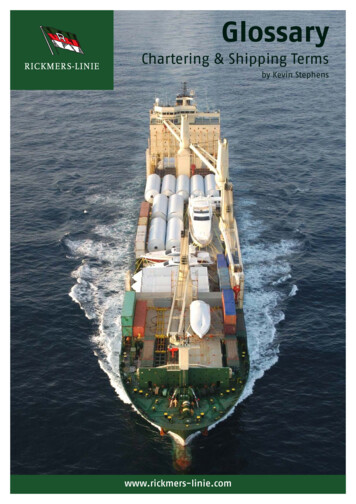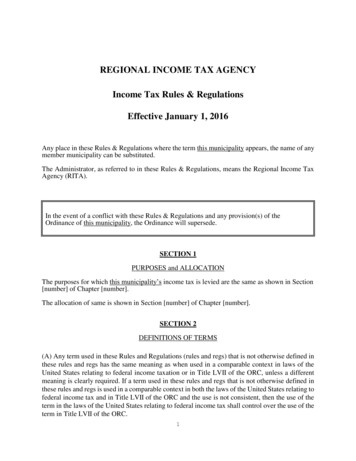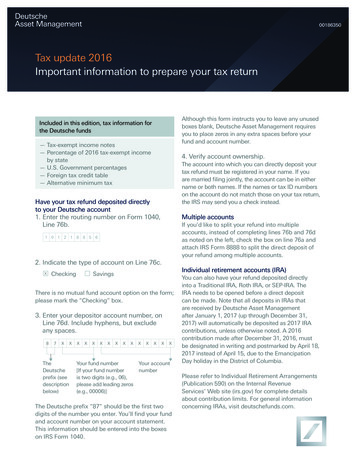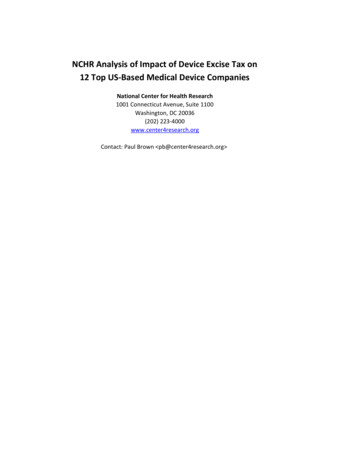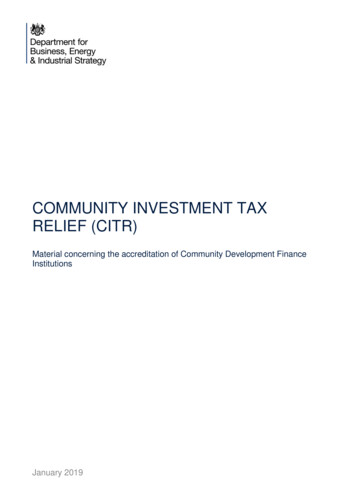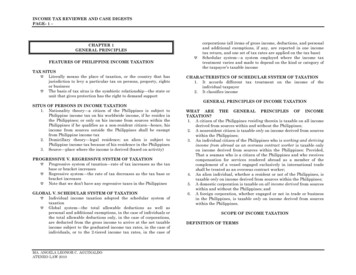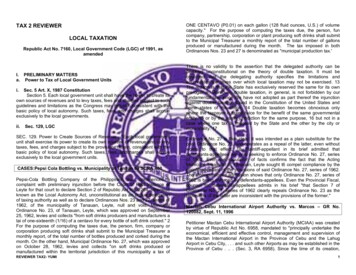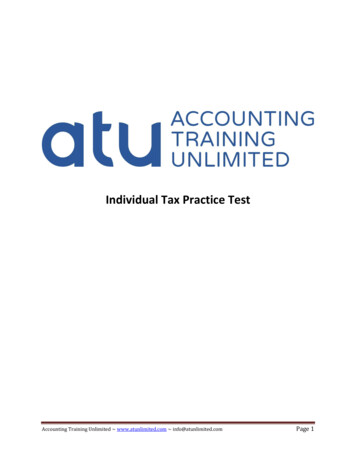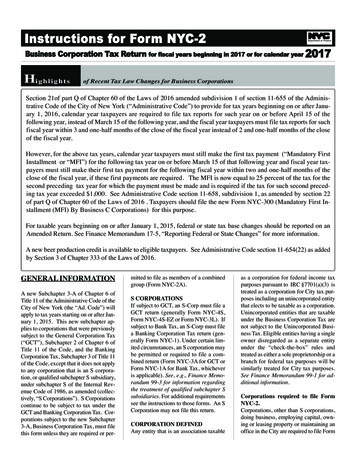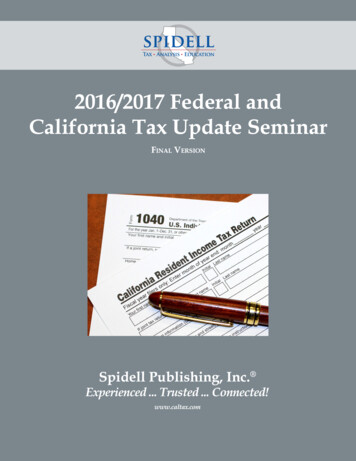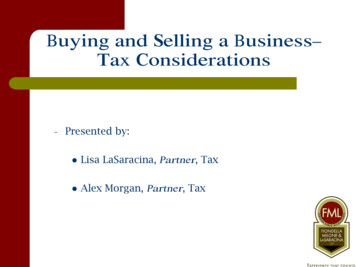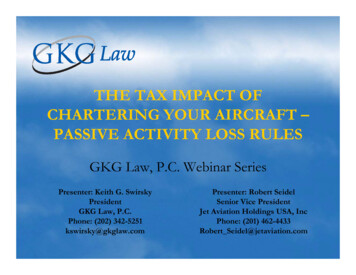
Transcription
THE TAX IMPACT OFCHARTERING YOUR AIRCRAFT –PASSIVE ACTIVITY LOSS RULESGKG Law, P.C. Webinar SeriesPresenter: Keith G. SwirskyPresidentGKG Law, P.C.Phone: (202) 342-5251kswirsky@gkglaw.comPresenter: Robert SeidelSenior Vice PresidentJet Aviation Holdings USA, IncPhone: (201) 462-4433Robert Seidel@jetaviation.com
Disclaimers4 This presentation is being provided for generalinformation and should not be construed as legal adviceor legal opinion on any specific facts or circumstances.You are urged to consult your attorney or other advisorconcerning your own situation and for any specific legalquestion you may have.4 IRS CIRCULAR 230 DISCLOSURE - To ensurecompliance with requirements imposed by the IRS, weinform you that any U.S. tax advice contained in thiscommunication is not intended or written to be used, andcannot be used, for the purpose of (i) avoiding penaltiesunder the Internal Revenue Code or (ii) promoting,marketing or recommending to another party anytransaction or matter addressed herein.Copyright GKG Law, P.C. 20092
Tax Impact of Chartering - Overview4If aircraft is used entirely for personal nondeductible purposes, then chartering adds abusiness use that creates tax deductions (costsmust be pro-rated)4If aircraft is primarily used in a trade or business(not a widely held “C” corp) and charter revenuepaid to owner equals or exceeds 2% of the FMV(or unadjusted basis if lower) of the aircraft, thenchartering hours and related costs must beseparately pro-rated generally these deductions will be treated aspassive tax lossesCopyright GKG Law, P.C. 20093
Overview – Cont.4Passive tax loss characterization can beadverse due to: Prohibition on netting against non-passiveincome and Suspension of excess passive losses4Additional issue of lengtheningdepreciation schedule from 5/6 to 7/12Copyright GKG Law, P.C. 20094
Who Can Benefit From Chartering?4Any owner that has little or no business use oftheir aircraft4Any owner that has business use, but a highrecreational use percentage4Any “C” corporation (caveat, closely held “C”corporations)4Any owner with substantial passive income4Anyone whose aircraft is fully depreciatedWe’ll come back to this laterCopyright GKG Law, P.C. 20095
Tax Analysis4 IRC § 469 provides that certain activities are consideredto be passive activities Activities in which the taxpayer does not materially participate Activities that are rental activities, regardless of taxpayerparticipation, unless an exception applies4 Providing an aircraft to a charter company is in essencea rental of the aircraft for use by the charter company incharter to the public4 All tax attributes from a rental of an aircraft wouldtherefore be treated as passive, generally resulting inexcess passive losses when factoring in depreciationCopyright GKG Law, P.C. 20096
Exceptions4IRC § 469 contains several exceptions tothe general rule characterizing rentals aspassive4Two exceptions are generally useful “extraordinary personal services” Rentals “incidental” to a trade or businessactivityCopyright GKG Law, P.C. 20097
Exceptions – Cont.4“Extraordinary personal services” has generallybeen construed to mean the provision of crew4In addition to the provision of crew, IRC § 469also requires the individuals receiving K-1s to“materially participate” in the chartering activity,on a substantive level For most presidents/CEOs this is not practical ordefensible Most charter companies would not allow the owner toget involved in the chartering business, on asubstantive level 500 hour safe harborCopyright GKG Law, P.C. 20098
Exceptions – cont.4 Rentals “incidental” to a trade orbusiness requires that: The aircraft must be used predominantly(i.e. 50%) in the business during the year,or 2 of the preceding 5 years; andGross rental income is 2% of the FMV (orunadjusted cost basis if lower) of the aircraft,determined annuallyCopyright GKG Law, P.C. 20099
Exceptions - Cont.4Assuming an aircraft has a 10M FMV(and a higher cost basis), then the 2% testwould limit gross rental income to 200K We are talking about the owners’ percentage typically 85% of the charter rate On a 10M aircraft with a charter rate of 3,500, at 85%, this would cap total charterhours at 67 annually Difficult test to meetCopyright GKG Law, P.C. 200910
Aggressive Planning4Aggressive tax planning might suggest creatingan entirely new business arrangement wherebyowner requires charter company to bear all theexpenses and pay a lower rental rate, therebyincreasing the permissible number of charterhours4Charter must remain below 50% of total hoursduring the year, or 2 of the preceding 5 yearsCopyright GKG Law, P.C. 200911
Who Can Benefit – Revisited4Any owner who has little or no business use oftheir aircraft will have enhanced deductions,albeit passive characterization, without meetingan exception4Any owner that has business use, but a highrecreational percentage recreational use percentage is reduced by addition ofcharter hours; total deductible percentage increases, albeit passivecharacterization, without meeting an exceptionCopyright GKG Law, P.C. 200912
Who Can Benefit – Revisited4 Any “C” corporation “C” corporations are not subject to IRC § 469 (caveat, closelyheld “C” corporations may only offset operational income – notportfolio income)4 Any owner with substantial passive income All tax losses allocated to chartering are currently usable tooffset other passive income Define passive income4 Anyone whose aircraft is fully depreciated Charter revenue may approximate “allocable” losses, resulting infull “write-off” of lossesCopyright GKG Law, P.C. 200913
Closing RemarksKeith G. SwirskyGKG Law, P.C.1054 31st St. NW, Suite 200Washington, D.C. 20007Tel: (202) 342-5251Fax: (202) 965-5725E-mail: Kswirsky@gkglaw.comCopyright GKG Law, P.C. 200914
business use that creates tax deductions (costs must be pro-rated) 4If aircraft is primarily used in a trade or business (not a widely held “C” corp) and charter revenue paid to owner equals or exceeds 2% of the FMV (or unadjusted basis if lower) of the aircraft, then charte
